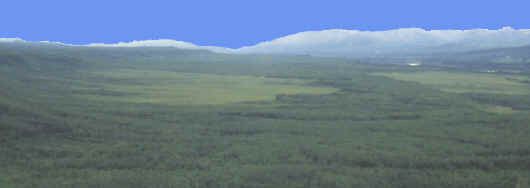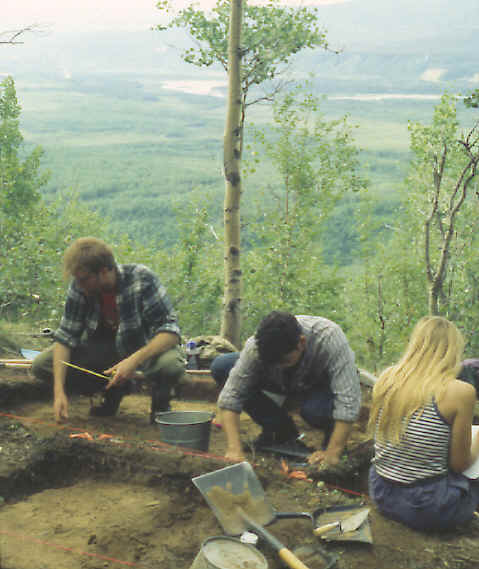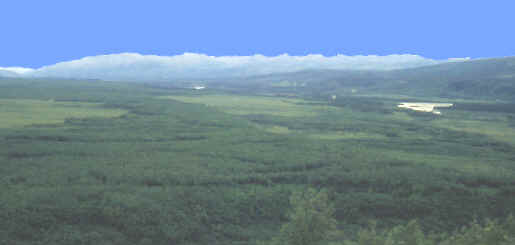|
|
|
|
|
|
"THE EARLIER COMPLEX (IN THE NENANA VALLEY) IS REPRESENTED---AT THREE SITES: DRY CREEK, MOOSE CREEK AND WALKER ROAD, TENTATIVELY LABELED THE NENANA COMPLEX"---1989, Powers & Hoffecker.
MOOSE
CREEK SITE The Moose Creek site is significant for its early Nenana culture occupation that dates to 11,190 years ago. The site is located in central Alaska approximately 100 km (62 miles) southwest of Fairbanks in the northern foothills of the Alaska Range. It is situated on a hilltop which is located on the highest terrace above the Nenana Valley and near the confluence of Moose Creek and the Nenana River. The town of Ferry is about four miles from the site. |
|
|
The Moose Creek site was discovered in 1978 by J.F. Hoffecker and C.F. Waythomas during the North Alaska Range Early Man Project. Subsequent excavation of the site in 1979 and 1984 discovered two cultural components. The excavation of 20 one meter squares brought to light one component of nondiagnostic stone tools that produced carbon 14 dates between 8160 + 260 and 11730 + 250 years before present. The other component consisted of only a dozen flakes and a biface fragment of undetermined Holocene age. |
|
|
The Moose Creek site was initially assigned to the Nenana complex because there were no microblades or any indication of a microblade technology found within the lowest occupational level. Microblades are part of the lithic technology of the later Denali complex and is not believed to be associated with the Nenana complex tool kit. But the lack of diagnostic tools from the earlier excavations and the validity of associating those stone tools with radiocarbon dates obtained from soil organics was a real problem. In-other-words the first excavations of the Moose Creek site in 1979 and 1984 did not produce enough evidence to conclusively prove that there was a Nenana complex occupation in the lowest level. |
|
| CONTINUE ON TO PAGE TWO | |
|
"REFERENCES"
1991,
"Clovis Origins and Adaptations," "The Nenana Complex of
Alaska and Clovis Origins," by Ted Goebel, Roger Powers and Nancy
Bigelow, pp 49-76. |
|




